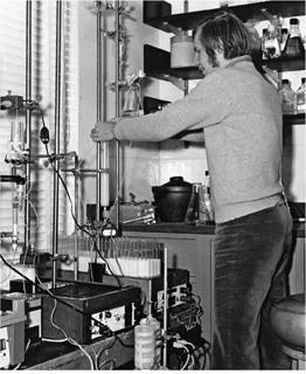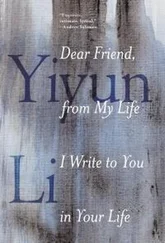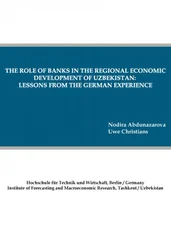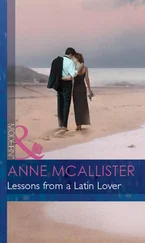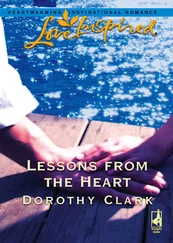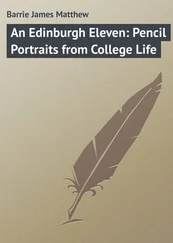James Watson - AVOID BORING PEOPLE - Lessons from a Life in Science
Здесь есть возможность читать онлайн «James Watson - AVOID BORING PEOPLE - Lessons from a Life in Science» весь текст электронной книги совершенно бесплатно (целиком полную версию без сокращений). В некоторых случаях можно слушать аудио, скачать через торрент в формате fb2 и присутствует краткое содержание. Жанр: Биографии и Мемуары. Описание произведения, (предисловие) а так же отзывы посетителей доступны на портале библиотеки ЛибКат.
- Название:AVOID BORING PEOPLE: Lessons from a Life in Science
- Автор:
- Жанр:
- Год:неизвестен
- ISBN:нет данных
- Рейтинг книги:5 / 5. Голосов: 1
-
Избранное:Добавить в избранное
- Отзывы:
-
Ваша оценка:
- 100
- 1
- 2
- 3
- 4
- 5
AVOID BORING PEOPLE: Lessons from a Life in Science: краткое содержание, описание и аннотация
Предлагаем к чтению аннотацию, описание, краткое содержание или предисловие (зависит от того, что написал сам автор книги «AVOID BORING PEOPLE: Lessons from a Life in Science»). Если вы не нашли необходимую информацию о книге — напишите в комментариях, мы постараемся отыскать её.
AVOID BORING PEOPLE: Lessons from a Life in Science — читать онлайн бесплатно полную книгу (весь текст) целиком
Ниже представлен текст книги, разбитый по страницам. Система сохранения места последней прочитанной страницы, позволяет с удобством читать онлайн бесплатно книгу «AVOID BORING PEOPLE: Lessons from a Life in Science», без необходимости каждый раз заново искать на чём Вы остановились. Поставьте закладку, и сможете в любой момент перейти на страницу, на которой закончили чтение.
Интервал:
Закладка:
I spent much of the remainder of the summer on Martha's Vineyard preparing the third edition of The Molecular Biology of the Gene.
Next to our old farmhouse was a small barn, whose large central room provided an ideal writing space. I was getting invaluable feedback from several science-oriented Harvard and Radcliffe students, who later extended the glossary and corrected the final proofs. Doing the many needed new illustrations was Keith Roberts, by then running his own plant cell biology lab at the John Innes Institute in Norwich, England. As a postdoc at Cambridge five years before, he had created the new drawings for the second edition as well.Over the following academic year, I was again on leave, working full time at Cold Spring Harbor at a salary identical to what Harvard would have paid me for teaching. Our settled residence in Cold Spring Harbor allowed Liz to take two classes per week at the New York School of Interior Design. Often sitting near her was the petite, blond Barbara Lish, wife of the writer Gordon Lish, then America's most influential arbiter of fiction, whom we befriended. Most unexpectedly we bumped into the Lishes at an early December gathering of intellectuals on the Florida coast. Arthur Schlesinger, Gunnar Myrdal, Saul Bellow, Vernon Jordan, and I had all been assembled just north of Daytona Beach with the unexpressed purpose of drawing attention to ITT's big beachfront development called Palm Coast. It was still a day when public intellectuals could sell real estate. Attracting us to this most unlikely gathering was the generous $4,000 honorarium, a much more substantial monetary award than normally given for intellectual chitchat. Barbara and Gordon were there in pursuit of Truman Capote. At the meeting, Gordon persuaded Capote to let Esquire, where he reigned as “Captain Fiction,” to serialize his newest opus, Answered Prayers. Before arriving at Palm Coast, we visited Disney World, where Duncan, just shy of his third birthday, screamed all through the jungle boat ride.
We were just a month settled into Airslie, its new picture windows alluringly draped with Swedish cloth we found in the D&D building on Third Avenue. Its many rooms let Liz invite her parents and her two brothers and sister, as well as her aunt from California and grandmother from Philadelphia, to spend Christmas day with us. But the big Christmas feast, preparation for which included many hours basting
two geese, did not go as planned. By the time the fowl were on the dining table everyone except the schoolteacher aunt and physician dad had come down with twenty-four-hour retching flu. The night before, we had received all the families in Lab housing for warm Christmas grog. I didn't know whether they had brought the contagion or whether one of Liz's family members was its origin. Fortunately, there was no sign of a Boxing Day epidemic.That year, the newly winterized Davenport Lab was utilized by three supermotivated yeast geneticists on sabbaticals: David Botstein from MIT, Gerry Fink from Cornell, and John Roth from the University of California at Berkeley.
After Christmas, our yeast trio and the tumor virologists began to discuss what should happen at Asilomar II, scheduled for February 1975.1 increasingly worried about restrictions that might be imposed on the use of recombinant DNA technologies to clone putative cancer-causing genes. In fact, these procedures would greatly reduce whatever risks we were now incurring using live SV40 virus or adenovirus 2. Our call for a moratorium, however, created the mistaken impression, magnified by each successive press conference, that working with recombinant DNA was a potential major public health hazard possibly equal to nuclear weapons. Even before the meeting started, Joe Sambrook had been asked to join fellow tumor virologists in coming up with guidelines that could only retard the development of recombinant DNA technology.
When I arrived at Asilomar, I found that virtually all the 140 participants were inclined toward accepting restrictions of one sort or another. Only Stanley Cohen, Joshua Lederberg, and I thought they were the wrong way to go. To no avail we voiced the impossibility of regulating an unquantifiable risk. Harm to someone or something had to be demonstrated before regulation could be rational, and to our knowledge no tumor virologist had come down with a cancer likely to have been caused by lab exposure. But for Paul Berg and his Asilomar II co-organizers, there seemed no way out of accepting some form of NIH-imposed guidelines. If we attendees did not accept them, the wrath of public opinion would surely descend upon all of us. And if
we did not propose them they would be imposed upon us in more draconian form. At the meeting's end, virtually all participants warily voted to approve the mildly restrictive rules prepared by the several working groups. If the public found them satisfactory, recombinant DNA experimentation should not be too badly set back. On the small feeder plane taking participants back to the San Francisco airport, however, I was full of foreboding. I believed that trying to look good, as opposed to doing good, could only backfire.A week after Asilomar I flew up to Boston to speak at the dedication of MIT's Cancer Center. In my talk, I offered my view on how to fight the escalating “war on cancer.” I proposed that money would be best spent initially on creating centers filled with Ph.D.'s, as opposed to M.D.'s. I did not see the big clinical cancer centers then as having the potential to attract the very bright young scientists who could find the molecular essences of cancer. And without those molecular keys all the money in the world would only little improve what clinicians could do. Only after my speech did I learn that an inexperienced young stringer for the Washington Post had been in the audience. To my horror, the next day the Post ran his story over the headline “Nobelist Calls War on Cancer a Failure.” I immediately wrote Dick Rauscher, the RNA tumor virologist now heading the NCI, to say that I had been badly misquoted. Fortunately, someone on his staff, Phil Stansley, also heard my talk, and backed me up.
With my $1,000 MIT honorarium I soon acquired for the Lab a Milton Avery-like abstract painting by the talented Long Island artist Stan Brodsky. It gave real style to the fireplace room of Blackford Hall until it was damaged by a large spoon thrown during a summer banquet food fight. After repairs costing almost half the original purchase price, it went back on the same wall until the next food fight damaged it again. This time the harm was slight, and it was only a few days before its subtle red, pink, and blue colors could again be admired.
In the fall of 1975, I resumed teaching at Harvard, flying up to Boston to spend Sunday and Monday nights at the Harvard Faculty Club. My lectures on tumor virus and animal cells were updated versions of those I had given three years before, using as a text the Lab's
monograph The Molecular Biology of Tumor Viruses. This was to be the last course I would teach at Harvard. Matt Meselson was unwilling to appeal to the dean for an exception to Harvard's long-standing prohibition against sharing faculty with other institutions. And so I was informed that, as of July 1,1976, I would no longer be a professor at Harvard. It was a situation of my own making, but all the same I was much annoyed, if not insulted, since Jack Strominger had recently become director of research at the Dana Färber Cancer Institute across the river while retaining his professorship in our department. Jack, moreover, now was being paid by both institutions, while I would have been content with only one salary if I could keep both jobs. There were many things I knew I would miss about Harvard, but by far the first would be its students; the obligation to lecture to them forced me to extend my own thinking, and occasionally the most extraordinary ones came down for research at Cold Spring Harbor, enriching the intellectual fellowship there.Just after Christmas, I flew to the West Coast with Liz, Rufus, and Duncan for a two-week visit that started in southern California, where for a week we stayed in an apartment on California Avenue just west of Caltech. There Max Delbrück had arranged for me to give a lecture honoring the recently deceased Jean-Jacques Weigle. I had always enjoyed Jean's nimble brain both at Caltech and when visiting him in his hometown of Geneva, where he did phage experiments in the summer. Afterward we drove up to San Francisco, where W. A. Benjamin held a book party to mark the appearance of the third edition of The Molecular Biology of the Gene. Like the first and second editions, its sales over five years would approach a hundred thousand copies.
Читать дальшеИнтервал:
Закладка:
Похожие книги на «AVOID BORING PEOPLE: Lessons from a Life in Science»
Представляем Вашему вниманию похожие книги на «AVOID BORING PEOPLE: Lessons from a Life in Science» списком для выбора. Мы отобрали схожую по названию и смыслу литературу в надежде предоставить читателям больше вариантов отыскать новые, интересные, ещё непрочитанные произведения.
Обсуждение, отзывы о книге «AVOID BORING PEOPLE: Lessons from a Life in Science» и просто собственные мнения читателей. Оставьте ваши комментарии, напишите, что Вы думаете о произведении, его смысле или главных героях. Укажите что конкретно понравилось, а что нет, и почему Вы так считаете.
